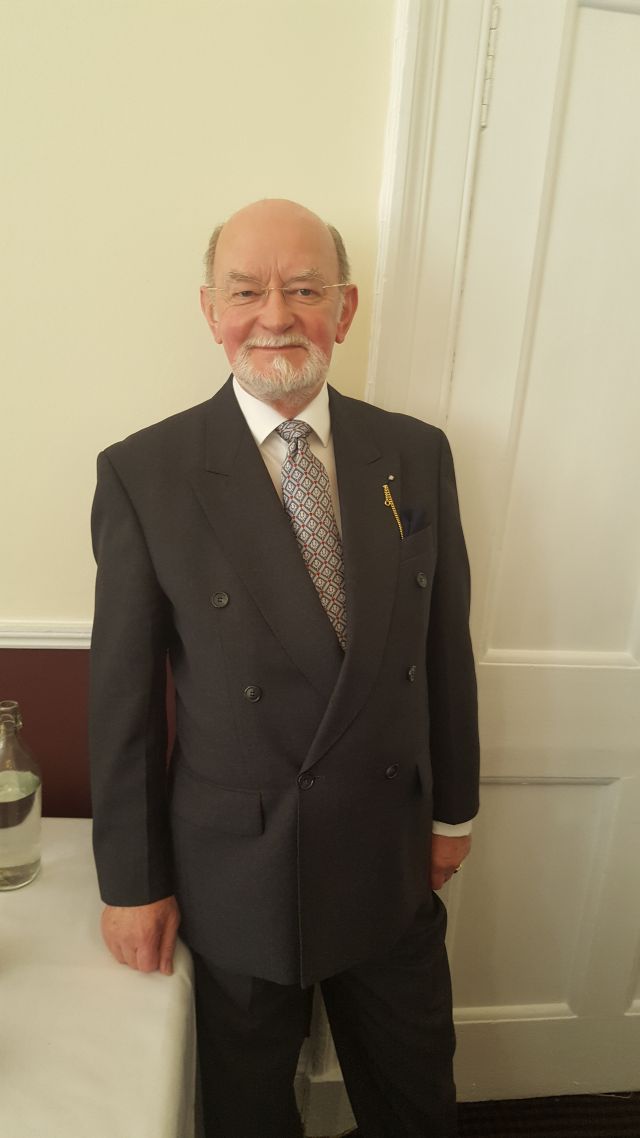No image from the flesh survives of our patron saint, but in the great artistic tradition of the Byzantine Orthodox Church he began to be shown as a bearded figure with a good head of hair holding his Saltire cross, and this continued from the Ravenna Mosaic of 800 through the Pictish stone of Portmahomack to the crucifixion seal on the thirteenth-century Guardians of Scotland. It was as though he wanted a different cross from that of Our Lord, and in 1385 the Scottish Parliament decreed that every soldier should wear a Saltire as a distinguishing mark. At this time the cross appeared on a black or brown square, and in 1390 the first gold coin in the reign of Robert IV carried the lion rampant on one side, St Andrew on the other.

By the mid-fifteenth century St Andrews Cathedral was a place of pilgrimage because bones, supposedly of the saint, were washed up there and had been placed in the cathedral. The St Andrews Museum has a large wooden carving of him as usual fully clad, with beard and a full head of hair, tied to his cross. A lead badge of St Andrew began to be sewn on to the garments of pilgrims, and coins of the James kings in 1451 and 1488 used different dies. The altarpiece of Trinity Collegiate Church painted c1472 has St Andrew with James III and IV and St George with Queen Margaret of Denmark. A shield of the Royal Arms of Scotland is turned to respect the missing middle panel which carried an image of the Virgin & Child. The sceptre gifted by Pope Alexander VI to James IV in 1494 displays a finial of three dolphins symbolising resurrection, with small statuettes of the Virgin, St Andrew and St James, the patron of the Stewart Royal Family. Saint James is illustrated with the Royal Family in the Vienna Book of Hours gifted by James IV to his bride Margaret Tudor. James III had begun the tradition of a Scottish royal collar with a St Andrew pendant, and also at this time St Andrew was depicted bearing a book. The motto “In my defens God us defends” from the Book of Hours became shortened to In Defens, and a thistle and marguerite were linked in a lovers’ knot. A seated lion on a crown holding a saltire flag bearing a red background was possibly a mistake by Flemish painters, but Burntisland Parish Church, the sailors’ kirk, has marine paintings that show saltires with a red background which were more visible at sea. St. Andrew is hanging again from a collar in a carving at Linlithgow Palace. One saltire flag with a striped background of gold and red is featured in a depiction of James III’s funeral in 1488.
In 1687 James VII inaugurated the Order of the Thistle and wore a neck badge with thirteen rose-cut diamonds surrounding a cameo of St Andrew which is now on display in the Crown Room at Edinburgh Castle beside the Honours of Scotland. A collar made by London goldsmiths for Edward VII has St Andrew this time without hair or beard. Russia has the same regard for St Andrew, and after Tsar Paul the Great visited Britain in 1689 he founded the Order of St Andrew the First Called. The Russian Navy flies a blue saltire on a white field as their naval ensign. The old Russian imperial honours have recently been revived by President Putin, including the Order of St Andrew the First Called. St Andrew appears also in the vestibule at Abbotsford in 1822 and on the regimental badges of the Royal Scots and the Black Watch. When Sir Robert Lorimer designed in 1911 the Thistle Chapel at St Giles Cathedral, his version of St Andrew is that of a fisherman with no cross high up on the outside gable. The Saint is seen again with a cross on the key to the Chapel. When the 7th Duke of Atholl became Chancellor in 1922, he had a new Badge made by Elizabeth Blackwood with bears the Saint. Another contemporary architect, Dr Kelly of Aberdeen, designed the War Memorial to graduates of the University in Kings College Chapel in Old Aberdeen which incorporates a painted oak statue of St Andrew. Our patron saint appears, along with his English equivalent, on the door handle of St Andrew and St George Church in Edinburgh. Modern heraldic devices at St Andrews show we are still creating images of Saint Andrew. In the National Shrine at St Mary's Roman Catholic Cathedral in Edinburgh there is n altar reliquary that contains fragments supposedly of the Saint’s bones which were gifted in 1879 and 1969.